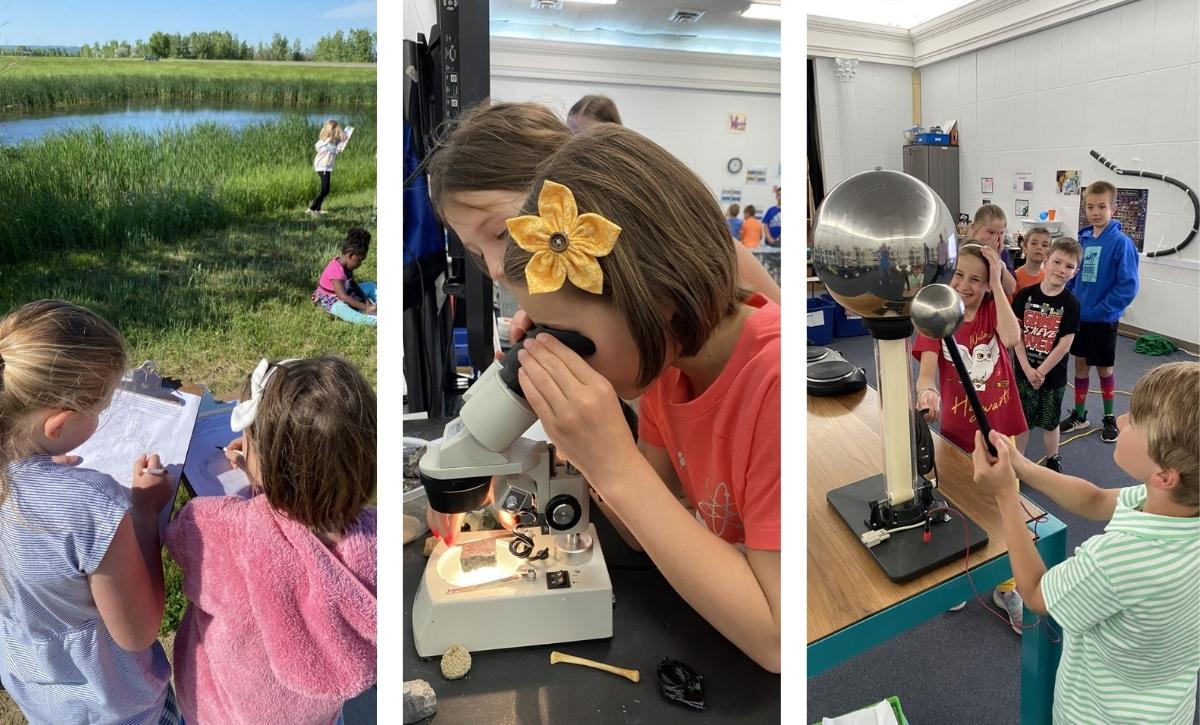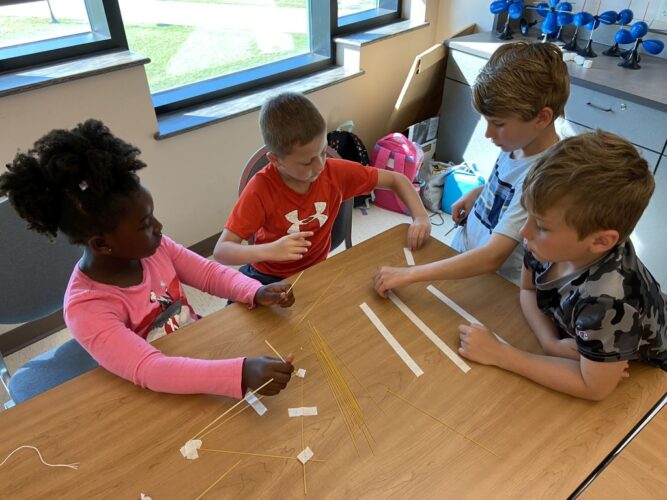North Dakota’s Summer of STEM Is Attacking Learning Loss Head-On
$200G in grants expand Gateway to Science camps and other offerings to reach 6,000 kids around the state, from the capital to rural areas

Get stories like this delivered straight to your inbox. Sign up for The 74 Newsletter
For the first-time in the history of North Dakota’s Gateway to Science program, all of its summer STEM camps are completely full. All 11 of the one-week camps maxed out at 20 students — after increasing the number of kids they could take.
“There is a big learning loss that happened in the last couple of years,” says Gateway to Science Programs Director Arin Casavat. “In the classroom, reaching these kids [taught] by a computer screen for over a year has made engagement a struggle. When you can put them in an informal setting with their interests guiding them, student-centered learning engagement keeps their interest.”
The state is supporting efforts like these with $200,000 in federal education grants, distributed by the Department of Public Instruction, to increase STEM opportunities throughout North Dakota.
With the difficulties of education in the past two years felt by educators and parents, summer programs with a legitimate level of academic rigor have proven powerful.
All Gateway to Science camps, which serve students in grades 1 to 5 or grades 6 to 9, have a full range of STEM offerings. “When we went back and talked to the parents, they were looking for things that were academic,” Casavat says. “Parents are starting to see learning loss and their kids want this experience, they want something academic.”
That’s why the program shifted away from traditional themed camps — LEGO, rockets or space, for example — and focused broadly on science, technology, engineering and math. “I was walking in the classroom, and an educator was teaching about irrational numbers,” Casavat says about a recent camp visit. “There is no way I could have advertised, ‘Hey, kids, come to camp and learn about irrational numbers’ — no one would sign up for that. But we introduced it that day, and some kids were really into it. That is why we opened camp with a sampling and show kids if they are brave enough to step in, we can show them this is pretty cool and this is a fun experience.”
Using its $20,000 grant, Gateway to Science hired expert staff from the University of North Dakota to develop lessons and was able to bring engaging, hands-on science experiences to students far beyond the state capital, Bismarck, to rural regions across the state.
Parent Alexandria Gibbs, who has a daughter entering fifth grade and a son entering first, says the camp provides a long list of benefits, not least of all the fact that her children discovered a “variety of topics that they have had zero exposure to prior to this program,” whether observing microscopic creatures pulled from a pond or experiencing a flight simulator.
“This program keeps challenging not only the children’s science skills over the summer, helping them stay sharp, but also their reading, math, critical thinking and social skills are being stimulated every day,” she says.
At camp, Gibbs says, children are less fearful of asking questions and making mistakes since they know they don’t have to remember every detail for a test. They can simply enjoy a “no-stress environment” focused on new subject matter. “They have had interests spiked in the program and inspired them to come up with creative activities at home, such as making a solar-powered oven to cook the whole family s’mores,” she says. “Their brains are continuously thinking about the world around them and contemplating how things work or why they are the way they are.”

Arlene Wolf, the department’s assistant director of school approval and opportunity, says the summer programming offers a valuable opportunity to not only curb learning loss, but also to expand children’s interests and foundational skills by opening enrollment to underprivileged families.
In awarding the grants, which were distributed among 11 organizations, the department didn’t just select programs with core academic enrichment activities but wanted to make sure students had a chance to also explore everything from arts to social and emotional well-being, realizing that learning loss may have had an even greater impact outside the core instructional areas.
This summer alone, North Dakota has reached over 6,000 students. “I believe this program has been extremely successful because of the wide range of programs offered to a variety of students with various interests and needs,” Wolf says. “It is incredibly humbling to visit some of these programs and be able to see how the students benefit directly from the essential services provided by these experts and educators.”
Get stories like these delivered straight to your inbox. Sign up for The 74 Newsletter

;)
